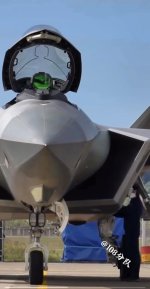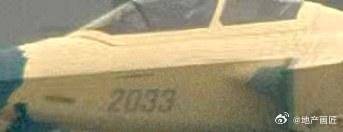Yes they should cranking up the J20 production Not sure how accurate is this guesstimate But pretty close I believe This article said there are now close to 13 brigades equipped with J20 which is remarkable
https://bulgarianmilitary.com/2024/...g-13-chinese-brigades-have-the-mighty-dragon/
J-20 fleet is growing – 13 Chinese brigades have the Mighty Dragon
By Alexey Lenkov On Jan 31, 2024
The production of the J-20 fifth-generation fighter has been on a notably rapid scale since 2021, exclusively for the Chinese People’s Liberation Army [PLA] Air Force. The J-20 is one of only two combat aircraft from its generation that’s not only in production but also boasts squadron-level strength – its counterpart being the American F-35.
J-20 fleet is growing - 13 Chinese brigades have the Mighty Dragon
The projected growth trajectory suggests that the delivery of J-20s will skyrocket to 120 units in 2025. This spike signifies a delivery rate 250 percent higher than that of the F-35 fighters to the U.S. Air Force – a significant achievement given that the J-20 is a larger twin-engine fighter aircraft.
With the increasing delivery of J-20s, more PLA Air Force brigades are witnessing the addition of this stealth fighter. Eight confirmed brigades featured J-20 deployment by the end of 2022, and an additional five reportedly saw them in 2023 – with two fully confirmed brigades to date.
It’s incredible, really. The superiority of the J-20 in conjunction with its skyrocketing production, well, it’s unparalleled. When you look around at other global services, there’s simply no other fighter acquisition that can match up to the procurement rate of J-20s by the PLA Air Force. It’s quite remarkable.
Now, if you project this forward, we’re anticipating that by the close of this decade, over 30 brigades will be proudly showcasing their stealth fighter inventories adorned with these J-20s. And considering the steady upswing in these production rates, it’s not a stretch to believe that a minimum of four units have already greeted the arrival of their J-20 deliveries in 2023. Quite the sight to behold!
The 97th Air Brigade
In the dwindling moments of December 2023, the whispers turned into facts – two brigades, rumored to be adopting J-20s, were in fact starting to take delivery of these cutting-edge aircraft. Stationed in the Dazu Air Base near Chengdu city of Chongqing is the 97th Air Brigade, and stationed at Foshan Air Base in the vicinity of Shenzhen, you’ll find the 4th Air Brigade.
The 97th Air Brigade traded in J-7E for J-20s. The J-7E, a lightweight third-generation bird of the sky is currently in the process of retirement, giving way to a squadron of J-20s, J-16s, and J-10Cs. Undeniably, the J-20s and their advanced companions are snatched up quickly by the eager PLA Air Force. Undeniably one for the history books, the 97th Air Brigade made its mark by being the very first to replace J-7s with J-20s.
The 4th Air Brigade has seen the replacement of its baseline J-11 fighters, a variant of the Russian Su-27 produced under license since the mid-1990s, with J-20s. The strategic placement of Foshan Air Base allows J-20s to perform air defense duties over Shenzhen and Hong Kong, extending all the way to the Longpo Naval Base on Hainan Island, which lies approximately 500km to the southwest.
This base holds significant military importance as it shelters the backbone of the nation’s nuclear missile submarine fleet. The proximity of the base to Taiwan, a mere 700km away and a potential hotspot for conflict, further emphasizes the importance of this facility.
The beginning was made in 2016
China’s PLA Air Force first welcomed the J-20 into their ranks in either the spring or summer of 2016, with the Dingxin Flight Test & Training Base’s 176th Air Brigade setting the precedent. Almost two years later, the Cangzhou Flight Test & Training Base’s 172nd Air Brigade – strategically located near the bustling cities of Tianjin and Beijing – also received these formidable aircraft. The fighters later landed at the Wuhu Air Base, assigned to the 9th Air Brigade.
This particular Air Brigade had the distinction of being the last squadron to receive the J-20’s baseline variants, equipped with derivatives of the Russian AL-31FM, for quite some time. It was not until January 2021 that the J-20A, a superior model powered by the WS-10C engine, made its appearance at the Anshan Air Base to serve with the 1st Air Brigade.
Analysts from China have speculated that this strategic assignment was intended to send a message to both Japan and South Korea: they should refrain from becoming involved in any potential Taiwan Strait conflicts. After the drama that unfolded at the beginning of the year, it wasn’t until 2022 that the 5th Air Brigade at Guilin Air Base finally received their J-20s. Indeed, 2022 was a hallmark year as it marked the first time these mighty aircraft were delivered to multiple brigades within the same year.
In March of the year, the 6th Air Brigade of Zhengzhou Air Base also obtained a compliment of J-20s. Not far behind, the 111th Air Brigade in Xinjiang confirmed the arrival of their own fleet just a month later. By August 2022, the Changxing Air Base’s 8th Air Brigade, which is strategically located near the Korean Peninsula, could boast its inclusion in the rapidly expanding J-20 club.
Given the delivery of J-20s to three separate brigades in 2022, the continuation of this trend seems quite likely as we move into 2023. We can logically expect at least four additional deployments considering the impressive growth we have seen in production capacity. Speculation abounds that the 97th and 4th Air Brigades are slated to be next in line, with the 131st Air Brigade, based at the Nanning Air Base near Hainan, also potentially on the list.
Unverified hosts
There’s also talk about the 41st Air Brigade at Wuyishan Air Base and the 95th Air Brigade at Lianyungang Air Base. Although unconfirmed, these brigades might be the prospective recipients of these superior fifth-generation jets. Evidence pointing towards the 131st Brigade can be gathered from the J-20 pilots’ badges, which appear to display the unit’s emblem, indicating their possible acquisition of the aircraft.
The J-20, with at least ten confirmed deployments and potentially twelve or more, is a force not to be underestimated. Given the available evidence, it’s unlikely that fewer brigades will receive the aircraft in 2023. Its performance and capabilities rank it among the most effective fighters for air-to-air combat worldwide.
With more than double the range of any Western fighter class and an advanced radar system far greater in size, the J-20 certainly stands out. Moreover, its avionics system is deemed on par with the esteemed F-35, matching in complexity and sophistication. Therefore, the expansion rate and extent of the J-20’s deployment will undeniably have serious ramifications on the Pacific power dynamics.
When the J-20’s primary weapons, the PL-10 and PL-15 missiles, were first introduced into service in the mid-2010s, they outshone their main American and Russian contemporaries. However, the U.S. Air Force has since begun to close the performance gap with sporadic procurement of new AIM-260 missiles, designed specifically to counter the J-20’s firepower.
In a matchup with America’s single-engine F-35, which significantly underperforms in flight range and lacks supercruise capabilities, the double-engine J-20 stands tall. Its superior flight performance, higher maneuverability, and ability to carry more missiles make it a formidable force.
Neither the older U.S. F-22 Raptor, with its dated avionics and sensors, nor any other fighter globally, is considered to be on par technologically with the J-20. The absence of important features such as helmet-mounted sights or distributed aperture systems on the F-22 leaves it at a significant disadvantage against the J-20 or even the F-35.
The J-20 evolution
The evolution of the J-20’s capabilities has been rapid across its production cycles. Its new engine, the WS-15, recently entered serial production in early 2023 and is expected to start equipping frontline units by mid-2025. This engine is set to launch the J-20 into a new era of supercruise capabilities, possibly achieving speeds exceeding Mach 2 while rejuvenating its performance across all speed spectrums.
The promise of allowing for combat operations at higher altitudes beyond the Armstrong Limit, coupled with enhancing the J-20’s already world-leading range due to increased fuel efficiency, makes the introduction of the WS-15 eagerly anticipated.
***














